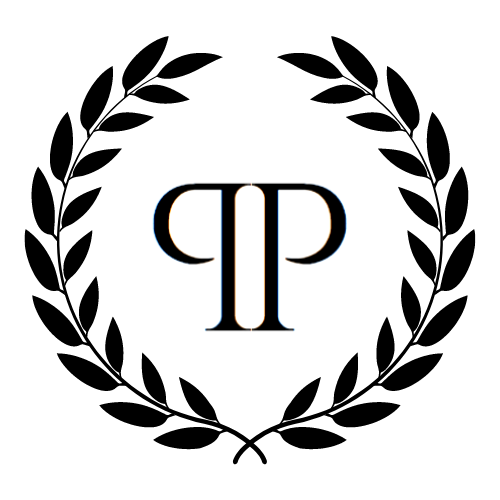In brief
I describe “World Renewed” as a song that tells about a person who meets someone at a bar only to realise it’s the Devil himself”.
The supernatural element wasn’t always there, though.
In fact, “World Renewed” is actually already a 30-year-old song as I composed it the first time in 1994! And originally it was just a simple story about a romantic encounter between two people.
You can listen to how it sounds today in here.
The reason I kept it hidden for so long is that although I’ve worked with several producers in the past, I always felt that the song never really found its true form. So I kept it in the drawer, and decided to keep working with it until I met the right kind of a producer.
And now I have.
His name is Juho Isomäki and he’s now become my master magician who’s able to make my music come alive just the way I’ve always wanted to. And because of that we’re now making my next album called “Player Characters” together. It will feature nine songs and they will come out every six weeks or so starting from September 6th, 2024.
Anyway, because of the initial romantic nature of “World Renewed” I designed this version of the song to include an mix of western 4/4 melody with a slightly haunting chord progression and wanted to combine that with a pattern of Arabic strings to represent the Devil’s voice.
The song begins with whisper-like singing that tells about a romantic encounter but then progresses inevitably to its end by a marching doom emphasized by (some barely audible) church bells and the funeral march type of tempo.
Cast
Technically there are three characters in the song:
- The main character, who’s just living their normal life, then goes to a bar
- The Devil. He is not mentioned explicitly, but that’s the idea.
- The narrator, because the song starts with “In the bar, he’s waiting for you” (and not “In the bar he’s waiting for me”. Perhaps this is a friend, a researcher of paranormal activity or just a passer-by. We don’t know that yet.
Taking it up a notch
I decided to add one more layer which is that the main character has actually planned the whole thing.
Now, if you’ve read any books or watched any movies about the subject, you’ll know that people summon demons, because they want to gain something, be it knowledge or power. But, there’s of course a price, which usually is the soul.
We don’t know yet why the main character did this or whether they had to sell their soul to get it so the story perhaps will continue in the future. Usually, of course, such deals are made in fiction so that access to something can be gained.
Relation to the album
“World renewed” will be the last track on the album “Player Characters” (even though it’s the first one that’s published from the album).
Each song actually corresponds to a woodcut illustration from the book “The Club Dumas”. The song “World renewed” corresponds to the last illustration, where a woman rides a dragon in front of a castle with an open front gate.
The person riding the dragon can be interpreted to be the Devil. The woman + dragon combo can also refer to the Whore of Babylon from the Bible’s Book of Revelation. She appears during the end times and in some images carries a golden cup, the wine in which represents sexual sins—and in the basic story of the song, there indeed is a sexual tension.
In the original book The Club Dumas, two explanations are offered for the image:
- If one has made a so-called materialistic interpretation of the woodblock prints, they might think the castle is on fire and that fire is needed to open the gate (which one can do to gain specific wisdom explained in the book).
- If one has made certain eight other choices that affect spiritual growth, then the illustration can be interpreted as the Ninth Gate, from which the Light of Knowledge shines.
Either way, this links the song to the overall theme of the album “Player Characters”, which is duality.
In the woodblock print from The Ninth Gate, the woman carries a book, which can be interpreted to contain secret knowledge. With the other hand she’s pointing to the castle—indicating a direction where the protagonist should go to achieve Wisdom.
“Wisdom” can be thought of as a symbol of a person’s overall spiritual growth. It is left for the reader to decide whether they want to find it with the help of God or the Devil—as neither are unequivocally good or evil, even though both are traditionally portrayed as such. This is another reference to duality.
Because the text of the woodcut “Nunc scio tenebris lux” translates as: “I know now that the shadows come from the light,” the circle closes back to the title: “World renewed”: now that I have made this choice (of meeting the Devil) and see this light, I experience the world anew, and the evil shadows are actually left behind me, and the light is the light of Wisdom.

I decided to use this picture as the base for the cover art and above is where I ended up, because
- no castle and
- no dragons
So, I had to use the local high school and my brother’s old Mercedes. 😉
There, Poliphilos stands in front of the car in his signature suit and sunglasses with a book in his hand pointing to a building behind which the sun is rising or from which light radiates. I’m very pleased with the picture!
Still, had I had found a dragon, I could have told you that different sources have explained the dragon’s heads in various ways:
- They were initially Roman emperors, or ancient kingdoms (Egypt, Assyria, Babylon, etc.) and one more kingdom yet to come.
- Another meaning is the entire Catholic Church (according to medieval reformers)
- A third explanation is the entire rest of Christianity (according to modern-day Jehovah’s Witnesses)
- The heads can also refer to all the nine trials mentioned in the book “El Club Dumas”. This means that Lucifer has actually been guiding the whole thing from the beginning, meaning he is the figure on the dragon and is guiding the protagonist—so the meeting in the bar, indeed, was not a coincidence!
One last thing: in the song, the Arabic strings describe the Devil’s speech, the song’s steady, Western 4/4 elements represent the protagonist and the triangle represents the light. For the record: no, I do not think Arabs are evil.
On the other hand, could the song’s steady, Western progression describe the steady decay of the West?
Ok, I’m rambling and there’s a lot to digest here. Most of it can be skipped and is only meant for hard core fans that want to dig deep into what meanings and symbolism can be discovered in my songs.
Let me know in the comments what comes to your mind now that you’ve read all this?


Leave a Reply